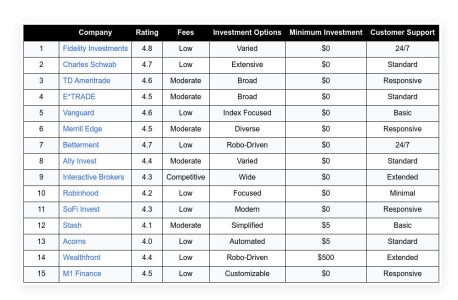Shopping for homes is exciting until one needs to secure financing to purchase. Even with savings, most Americans can only buy a house through a mortgage loan. In the fourth quarter of 2022, the US residential mortgage debt reached $11.92 trillion.
As home prices continuously soar and interest rates hit historically high levels, getting a mortgage loan becomes increasingly tricky. Obtaining an estimate of how much you can comfortably spend on a home is an excellent starting point. Doing so shows your commitment as a serious buyer.
That’s where mortgage pre-approval and pre-qualification come into play. Both are valuable steps in the mortgage application process. While they’re often used interchangeably, there are critical distinctions that every homebuyer should understand.
Are you in the process of applying for a purchase mortgage or home refinance? Read on to learn the difference between getting pre-approved and pre-qualified and how they affect your chances of purchasing a home.
Table of Contents
ToggleThe Differences Between Getting Pre-Approved and Pre-Qualified
Obtaining either pre-approval or pre-qualification means that a lender has examined your financial situation and verified that you meet specific criteria for their loan approval requirements.
While both terms are similar in many ways, differences exist between getting pre-approved and being pre-qualified. Understanding the distinctions between pre-approval and pre-qualification can help you decide which path to take as you start your home-buying journey.
Requirements
The information required in the pre-qualification process is limited. Typically, the lender only asks about your basic financial information to give you an estimate of the mortgage amount you will qualify for. In contrast, mortgage pre-approval demands more information and documentation. Some lenders may even require you to fill out a mortgage application during pre-approval.
Timeframe
Since getting pre-qualified doesn’t involve an in-depth look at your finances and credit report, the pre-qualification process typically only takes a few minutes. Meanwhile, most lenders take 7 to 10 business days to process a mortgage pre-approval, though some may only take one to three business days.
Application fee
Pre-qualification can be performed online or over the phone, so you don’t usually have to pay application fees. There’s also no cost involved in pre-approval applications. However, some lenders may impose an application fee, which can amount to several hundred dollars.
In some instances, lenders may waive application fees to attract more borrowers. Others may integrate the payments into the closing costs. It’s critical to inquire about these fees before submitting your pre-approval application.
Credit inquiry
Mortgage lenders will perform a credit check to assess the likelihood of homebuyers making timely loan payments.
With pre-qualification, the credit check is limited to a soft credit inquiry. It enables lenders to view your credit report without affecting your credit scores. On the other hand, a pre-approval requires a hard credit inquiry, which will remain visible on your credit reports for a period of two years.
Accuracy
Since pre-qualification doesn’t involve in-depth financial background checks, it’s less reliable than pre-approval. The information that pre-approval provides is more accurate than pre-qualification.
For instance, the lender only gives you an estimate of the loan when you get pre-qualified. However, pre-approval outlines the loan amount for which you will be eligible, along with the interest rate information.
Advantages
Since pre-approval is significantly more precise about the amount you can borrow and the corresponding interest rates, it gives you more confidence to negotiate with sellers.
Pre-approved buyers are more likely to close on the home at the agreed-upon price. Unfortunately, many skip the pre-approval process. However, avoiding making concrete plans solely based on your pre-qualification status is essential.
Getting pre-qualified can convince sellers that you’re a serious buyer. However, getting pre-approved is paramount to stand out from other prospective buyers in today’s highly competitive housing market. Pre-approval gives sellers assurance of your capacity to get a mortgage.
To better comprehend the distinctions between pre-approval and pre-qualification, let’s look at how they work and the steps involved in each process.
Understanding How Mortgage Pre-Approval Works
A mortgage pre-approval is one of the most valuable steps when securing a home loan.
Numerous lenders claim that your chances in a highly competitive housing market are slim without it. But what exactly does getting pre-approved for a mortgage mean, and how can it help distinguish you from other potential buyers?
Obtaining a mortgage pre-approval doesn’t guarantee that you’ll secure a loan for the home you want to purchase. It’s only a written document from a mortgage lender verifying that you qualify for a mortgage under specific terms and conditions.
While it doesn’t ensure final approval, getting pre-approved makes you a more attractive home buyer to potential sellers. It gives you and the seller a picture of your borrowing capacity, enabling you to make an appealing offer that meets your needs.
Moreover, sellers are more likely to accept offers from someone with mortgage pre-approval than those who don’t have one. That’s because a home sale is more likely to go through if the buyer has already been pre-approved for a mortgage.
[Related: What the Self-Employed Need to Know When Applying for a Mortgage]
Steps Involved in Getting a Mortgage Pre-Approval
When sellers get multiple offers or inquiries about their house, a mortgage pre-approval will secure you a more favorable position in the selection process.
But how do you get a mortgage pre-approval? Whether you’re a first-time home buyer or have been through the process, here’s an overview of the steps to get pre-approved for a mortgage.
Assess your finances and the market
A pre-approval is a physical assessment of your financial situation. But before getting pre-approved, it’s a good idea to assess your finances and learn what kind of market you’re in.
Doing so can help you make a more informed decision about how much you feel comfortable spending monthly on your mortgage. A lender may grant you pre-approval for a larger monthly payment. Even so, you’d want to stick within your budget.
Contact a mortgage lender
Numerous mortgage lenders provide the option to process your mortgage pre-approval online. Each lender’s guidelines and interest rate options can significantly affect your mortgage monthly payments.
Hence, it’s beneficial to obtain quotes from multiple lenders. Getting pre-approved with one lender limits your options to what they have to offer. Meanwhile, with pre-approval from several lenders, you have better chances of finding the lowest rates and fees.
However, pre-approval usually involves a hard credit inquiry, which can cause a decrease in your credit score by a few points. Some financial experts recommend getting pre-approved by up to three lenders. If you decide to do so, request pre-approval within 45 days to lessen its impact on your credit score.
Submit the necessary documents
Submit your application and the necessary documents on time to prevent delays in the pre-approval process. The documents may vary depending on your occupation, loan type, and the residence category you intend to purchase. Ask the mortgage lenders for their particular requirements.
Here are the documents commonly required when seeking mortgage approval:
- Personal identification
- Social security card or driver’s license
- Most recent pay stubs
- Employment W-2 forms from several years
- Most recent federal and state returns
- Statements of bank and investment accounts
- Proof of deposits and assets
- Business record if you’re self-employed
- Credit reports
Receive your pre-approval letter
The speed at which a lender grants you a pre-approval letter varies. Some lenders take 7 to 10 business days to process a mortgage pre-approval. Others may only take one to three business days. Some elements that can impact the duration of the pre-approval process include:
- How fast you gather and submit the required documents
- The time needed to evaluate your financial paperwork
- The market’s demand for your choice of lender
- Income audits or other verifications
When Does It Make Sense To Get Pre-Approved for a Mortgage?
It’s wise to apply for mortgage pre-approval at the beginning of the home-buying process. Doing so enables you to gauge how much you can afford in a home and positions you as a serious buyer. However, getting pre-approved too early can be wasteful for numerous reasons.
Pre-approval letters have a limited validity period, typically 30 to 90 days. Your pre-approval letter might expire before you can utilize it to purchase your dream home. Only get pre-approved for a mortgage if you’re ready to bid or serious about making an offer on a home.
Moreover, applications for mortgage pre-approval often come with a cost. Reapplying for another pre-approval will incur additional charges. Getting pre-approved generates a hard inquiry on your credit report. Thus, securing pre-approval too early can harm your credit scores.
The mortgage pre-approval process can also take as long as two weeks. So you would not want to apply too late for a mortgage pre-approval. Assess your situation accordingly and your readiness to purchase a home before getting pre-approved.
Understanding How Mortgage Pre-Qualification Works
Mortgage pre-qualification is another crucial step in home-buying, particularly for first-time buyers.
Getting pre-qualified allows you to estimate how much you can spend on a house. Pre-qualification doesn’t guarantee your mortgage’s approval, but it will enable you to explore different mortgage options and identify the most appropriate for your needs and goals.
Typically, a pre-qualified mortgage also offers an estimated range of how much money lenders are ready to lend you. Hence, you can get a general idea of your potential monthly mortgage payments. This information can help you avoid looking at properties beyond your price range.
Likewise, a pre-qualification letter from a lender lets you make a more appealing offer on a home. Although it’s not a guaranteed loan offer, getting pre-qualified reassures the seller that you can secure financing for the home purchase.
Many sellers and realtors won’t bother showcasing a home to potential buyers unless you have a pre-qualification letter. With a mortgage pre-qualification, you can better demonstrate that you’re prepared and eager to purchase a house.
Steps Involved in Getting a Mortgage Pre-Qualification
With mortgage pre-qualification, you can get insights into what you can afford in a house. Note that it doesn’t ensure a subsequent pre-approval. Regardless, you can get pre-qualified shortly after deciding to purchase a home.
What are the steps involved in securing a mortgage pre-qualification? Every mortgage lender operates differently. Still, most potential homebuyers can get pre-qualified through online platforms or over the phone. The following are a few measures to help you commence the process:
Examine your credit report
Pre-qualification relies on a cursory review of your financial details. Although getting pre-qualified only involves a soft credit check, examining your credit report is still wise. Doing so at the onset of your home search allows you more time to correct errors or pinpoint areas to improve your credit score.
Typically, it takes 30 days or more to see changes in your credit score. The sooner you initiate improvements, the more advantageous it will be for you in the long run. A higher score will help simplify the pre-qualification process and boost your chances of securing a lower interest rate.
Speak with a mortgage lender
Speaking with multiple mortgage lenders is also advisable to get the best deal. Compare their mortgage interest rates and the various loan options they offer. Decide which lender will best suit your situation. Reviewing customer reviews can also aid you in making an informed decision.
Since pre-qualification is a preliminary indication that a lender may approve you for a mortgage if you apply, most lenders only perform a soft pull credit check. Hence, getting pre-qualified with numerous lenders lets you explore loan options without hurting your credit score.
Discussing the pre-qualification process with a lender can provide valuable information to improve your credit or finances. When you apply for final approval for a mortgage application, you may qualify for a larger loan or better terms.
Provide financial documentation
Some lenders may require you to complete an application to get pre-qualified. Meanwhile, others may only gather your personal and financial information verbally online or on a call. Regardless, a pre-qualification review usually includes the following basic financial details:
- Income
- Employment history
- Monthly expenses
- Debts
- Savings
- Credit score
Get your pre-qualification letter
After providing your personal and financial information to a loan officer, the process for mortgage pre-qualification only takes a few minutes. Typically, the lender will shortly review your application. It doesn’t involve underwriting and is only based on general guidelines.
You can expect to receive a pre-qualification letter in a few minutes through email. After getting your pre-qualification letter, you can learn about the various mortgage options. It may be accompanied by the estimated mortgage amount and interest rates you will likely be approved for.
When Does It Make Sense To Get Pre-Qualified for a Mortgage?
Pre-qualification involves a less rigorous process than pre-approval. Since getting pre-qualified is usually free and doesn’t affect your credit scores, it’s a good idea to seek mortgage pre-qualification to compare different lenders and their loan options.
A pre-qualified mortgage is also an excellent option to understand how much you can afford on a home. Note that pre-qualifications don’t expire. So, as long as there are no significant changes in your credit and finances, it will be helpful even if you’re still in the initial phase of house hunting.
Navigate the Mortage Process With More Ease
Unless you’re paying cash, getting pre-approved and pre-qualified is crucial in the mortgage application process. Both initial steps can help you secure a mortgage loan with more ease. They boost your negotiating power and help you shop for homes within your financial reach.
Despite their differences, mortgage pre-approval and pre-qualification share a commonality. They serve as lenders’ confirmations that you’re qualified for a mortgage. As a result, you can navigate the loan approval procedure and home-buying journey with minimal complications.














